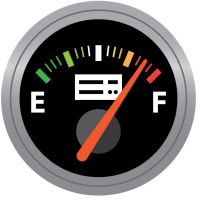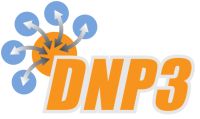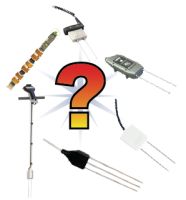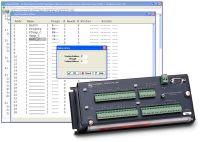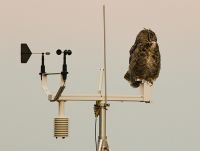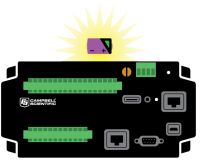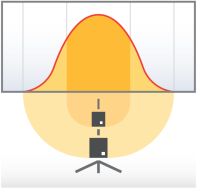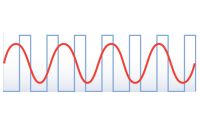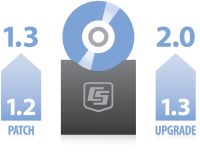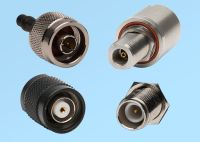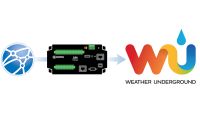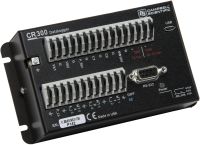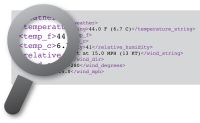Campbell Scientific ブログ 役立つハウツー情報と専門家のアドバイス
Displaying 121 - 140 of 181 articles
The Internet of Things (IoT) – Doing Our “Thing” Since Y2K
著者: Dana Worley | 最終更新日: 09/28/2016 | コメント: 2
We all remember the year 2000 as the year that The World As We Know It would come to an end. Computer systems were predicted to come crashing down on January 1, leaving in their wake failing infrastructure that would affect millions of lives. In... 続きを読むHow to Know when Your Data Logger Memory Is Getting Full
著者: Janet Albers | 最終更新日: 09/15/2016 | コメント: 2
It’s common for our customers to wonder when their data logger memory is going to be full, what will happen to their data when the memory is full, and what they should do about it. After all, your data is specific to your application and... 続きを読むHow to Access Your Measurement Data Using DNP3
著者: Paul Smart | 最終更新日: 09/02/2016 | コメント: 1
Turning your Campbell Scientific data logger into a DNP3 outstation is a great way to allow systems that use the DNP3 protocol to have access to your live measurement data, as well as historical data. When you use your data logger as a DNP3 outstation, the... 続きを読むLoggerNet Admin at Your Service for Mission-Critical Applications
著者: Dana Worley | 最終更新日: 08/05/2016 | コメント: 2
While many of our customers are knowledgeable about our LoggerNet datalogger support software, not as many are familiar with LoggerNet Admin and the benefits it can offer. In this article, I’ll introduce you to LoggerNet Admin, show you how easy it is to install it as... 続きを読むLine of Sight: More than Meets the Eye
著者: Travis McKissack | 最終更新日: 07/21/2016 | コメント: 0
When it comes to designing an RF (radio frequency) telemetry link, many people know that you need to ensure that there is an unobstructed line-of-sight (LOS) between the transmitting and receiving antennas. Unfortunately, many people don’t know that there is more to this seemingly obvious... 続きを読むアプリケーションに最適な土壌水分含有量センサを見つける方法
著者: Jason Ritter | 最終更新日: 07/06/2016 | コメント: 4
土壌水分含有量センサーにはさまざまな種類があるため、用途に最適なものを選択するのは難しく、混乱するかもしれません。選択を支援するには、土壌水分含有量センサーが実際に何を測定するのか、優れた土壌水分含有量センサーの特徴は何か、メーカーの仕様をどのように理解するかを理解することが重要です。この記事では、センサーの選択プロセスに役立つこれらのトピックについて説明します。 土壌水分含有量センサーは実際に何を測定するのでしょうか? 水分を直接測定する市販の土壌水分含有量センサーがないことに驚かれるかもしれません。代わりに、センサーは、水分含有量に関連する他の土壌特性の変化を予測可能な方法で検出します。水分含有量によって変化し、簡単に測定できる一般的な土壌特性には、誘電率、熱伝導率、中性子束密度などがあります。この記事では、誘電率を測定するセンサーに焦点を当てます。 誘電率センサーは、市場で最も一般的なタイプの土壌水分含有量センサーです。これらのセンサーは、次のようなさまざまな技術を使用して周囲の土壌の誘電率を測定します。 Time domain reflectometry Time domain transmissivity Frequency domain reflectometry Time of charge capacitance Transmission line oscillation Coaxial impedance dielectric reflectometry Coaxial differential amplitude reflectometry 技術に関係なく、同じ原理が使われます。土壌のバルク誘電率は体積水分含有量に応じて変化します。 誘電率を最も簡単に考える方法は、蓄えられた電気エネルギーと考えることです。センサーは土壌に電界を生成し、水分子は極性があるため、土壌内の結合していない水分子は電界線に沿って回転します。 結合していない水分子の回転にはエネルギーが必要で、このエネルギーは整列した水分子に位置エネルギーとして蓄えられます。土壌に水分が多いほど、蓄えられるエネルギーも多くなり、土壌の体積誘電率が高くなります。 土壌の他の成分、つまり鉱物や有機固形物、空気も電気エネルギーを蓄えますが、水は土壌の他の部分の 10 倍以上のエネルギーを蓄えることができます。そのため、センサーの測定体積に出入りする水の動きが誘電率の変化に大きく影響します。 土壌水分量センサーは、誘電率、つまり水分量に応じて変化する電気信号を出力するように設計されています。一部のセンサーは誘電率を決定してから水分量に変換しますが、他のセンサーはセンサーの電気出力を 1 回のステップで体積水分量に変換します。どちらの方法を使用する場合でも、土壌の水分は体積誘電率に影響し、それがセンサーの電気出力に影響します。精度仕様を比較するときには、この点を覚えておくことが重要です。 優れた土壌水分含有量センサーとはどのようなものでしょうか? 理想的な高性能土壌水分含有量センサーは、次の特性をすべて備えています。 精度と解像度の要件を満たします。 必要な期間だけ使用できます。 校正は最小限で済み、再校正は必要ありません。 予算の要件を満たします。 設置と測定が簡単です。 ご想像のとおり、これらの特性は互いに競合する可能性があります。たとえば、耐久性があり高精度のセンサーは、耐久性が低く精度が低いセンサーと比較すると高価になる可能性があります。センサーメーカーは、これらの競合する要素の適切なバランスを見つけようとします。アプリケーションに最適なセンサーを決定するには、これらの要素のどれが最も重要かを判断し、最優先事項に最も一致するセンサーを探します。 メーカーの仕様とは何を意味しますか? 土壌水分含有量センサーの仕様を本当に理解するには、水分含有量、誘電率、および誘電率に応じて変化する電気信号の関係について考えると役立ちます。これら 3 つの関係によって、水分含有量値の精度と解像度、およびセンサーの動作範囲が決まります。 正確度 体積水分含有量測定の精度は、いくつかの要素に依存します。 電気測定の精度 測定電子機器に対する温度の影響 水の誘電率と土壌の電気伝導率に対する温度の影響 異なる誘電率の値を推定するセンサーの精度 電気測定値または誘電率値を体積水分含有量に変換する関数の精度 センサー周囲の土壌が校正関数とどの程度一致するか すべての土壌水分含有量センサーが誘電率の測定精度仕様を提供していれば、さまざまなセンサーの性能を比較するのがはるかに簡単になります。残念ながら、多くのユーザーは誘電率と体積水分含有量の関係、および最終的な水分含有量の推定値に誤差を加える可能性のあるさまざまな条件を完全に理解していません。 すべての土壌に機能する単一の校正機能はないため、メーカーは通常、1 つまたはいくつかの「代表的な」土壌を選択し、その選択に基づいて水分含有量の精度仕様を提供します。では、たとえば、「±1% 体積水分含有量」などの精度仕様は実際には何を意味するのでしょうか。この仕様は、校正作業が行われた条件下での ±1% を意味します。これらの条件は、おそらく屋内で、温度変化が最小限で、代表的な土壌タイプが 1 つまたは数種類しかない場合です。 ご使用の環境が同じ条件である場合、センサーの精度は仕様を満たします。 センサーを自然環境(変動がはるかに大きい)に設置する場合、独自のキャリブレーションを実行しない限り、精度が仕様を満たさない可能性があります。 もう 1 つの重要な考慮事項は、土壌が非常に乾燥すると、誘電土壌水分含有量センサーの精度が低下することです。土壌内の水分量が非常に少ない場合、土壌全体の体積誘電率に対する水分の寄与は小さくなり、センサーの変化検出能力を下回る場合があります。乾燥した土壌では、水分含有量の変化よりも温度がセンサー出力に大きく影響することがよくあります。 ヒント: 低水分含有量レベルで高い精度を保証する仕様には十分注意してください。 注意: 精度は絶対精度 (水分率/乾燥土壌率) または読み取り値のパーセンテージとして指定できます。読み取り値のパーセンテージを絶対精度に変換するには、動作範囲の上限と下限を掛けます。... 続きを読むHow to Store Data Logger Data to a Memory Card
著者: Carolyn Ivans | 最終更新日: 06/22/2016 | コメント: 7
You may have identified the need to add external data storage to your data logger with flash-memory cards. But do you know which CRBasic instruction to use to do it? In this article, I’ll help you choose the most suitable instruction for your application. In a... 続きを読むThe Best Way to Edit Input Locations in Edlog Programs
著者: Janet Albers | 最終更新日: 06/08/2016 | コメント: 0
If you have one of our retired data loggers that uses the Edlog programming language, do you know the best way to change an Input Location name? It’s possible that you may want to use a different name or insert a name where one is... 続きを読む6 Tips to Protect Your Weather Station from Birds
著者: Robin Deissinger | 最終更新日: 05/25/2016 | コメント: 0
You’ve got your weather station set up and running, your data is coming across just fine, and then a bird decides your station is a wonderful place to make a home. That’s great for the bird, but not so great for the performance of your... 続きを読むGet to Know Your Data Logger’s Spare Tire: The Lithium Battery
著者: Jacob Davis | 最終更新日: 05/18/2016 | コメント: 2
When was the last time you checked the air pressure on your automobile’s spare tire? What if you were driving along, got a flat tire, and discovered that your spare tire was flat as well? We don’t often think about our spare tire until we... 続きを読むWhy Measurements on the Edge Require Careful Planning
著者: Shaun Dustin | 最終更新日: 05/11/2016 | コメント: 1
I have worked with Boy Scouts for the past 18 years. When I need to talk to boys about taking risks, I share a story about three young men who were competing for a job to deliver goods over a mountain pass with hairpin turns... 続きを読むHandling New Device Drivers in a Changing Windows World
著者: Dana Worley | 最終更新日: 04/27/2016 | コメント: 0
We've all been there. You open the box for some new toy such as a camera, printer, or even a data logger, and before you can get started, you are required to install a device driver. The device driver loads files onto your computer so... 続きを読むHow to Select the Correct Pulse Type for Your Measurements
著者: Jacob Davis | 最終更新日: 04/21/2016 | コメント: 0
Have you ever had a sensor work on a P (pulse) data logger terminal, but not on a C (control) terminal? Is the list of choices for the PConfig parameter in the PulseCount() instruction daunting? Campbell Scientific data loggers offer several options for measuring pulse... 続きを読むHow to Navigate the World of Software Upgrades, Patches, and Trials
著者: Dana Worley | 最終更新日: 04/13/2016 | コメント: 0
You may find it a little confusing to differentiate between software upgrades and patches. For example, when do you need which one? When is there a fee for a software release, and when is a release free of charge? With the recent release of the new... 続きを読むHow to Access Live Measurement Data Using Modbus
著者: Paul Smart | 最終更新日: 04/07/2016 | コメント: 24
Did you know that you can turn your Campbell Scientific data logger into a Modbus TCP/IP server? Do you know why that’s a good idea? Campbell Scientific data loggers are commonly used as Modbus server devices. This means that the data logger is configured to... 続きを読むUnderstanding the Ins and Outs of RF Connectors
著者: Sam Utley | 最終更新日: 03/30/2016 | コメント: 4
While you may have no problem identifying which standard polarity RF connectors are pin (male) or socket (female), do you find it difficult to identify the gender of reverse polarity connectors? If so, don’t worry. You are certainly not alone. In addition to the gender... 続きを読む5 Steps to Post Your CR6 Data to Weather Underground
著者: Sam Utley | 最終更新日: 03/23/2016 | コメント: 10
Note: It appears that after this blog article was written, Weather Underground has been phasing out the “PWS – Upload Protocol.” The following tutorial may or may not work currently or in the future. However, it continues to offer some insight into structuring a CRBasic... 続きを読む10+ Reasons to Be Excited about the New CR300 Datalogger
著者: Robin Deissinger | 最終更新日: 03/16/2016 | コメント: 3
In this short interview, Kevin Rhodes, the product manager for the new CR300, tells us how this new data logger will be helpful to Campbell Scientific customers and why he thinks the CR300 is a great value. Kevin is the Director of Product Management at... 続きを読む6 Steps to Easily Parse Data from a Trusted Source
著者: Gary Roberts | 最終更新日: 03/02/2016 | コメント: 1
Would it be helpful to include data from a reputable source with your own data? If you have permission to use another source’s data for free or by agreement, how can you easily extract the specific data you want to use without doing a lot... 続きを読む9 Tips for Proper Battery Care
著者: Brad Maxfield | 最終更新日: 02/17/2016 | コメント: 1
In honor of National Battery Day, celebrated annually on February 18th, we’d like to take a moment to remind you of some tips for safely handling, storing, and using batteries in conjunction with your Campbell Scientific equipment. While it may be easy to overlook the proper... 続きを読む












